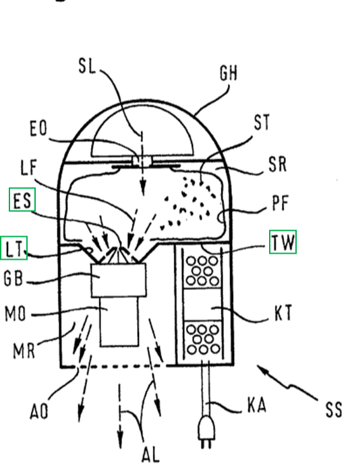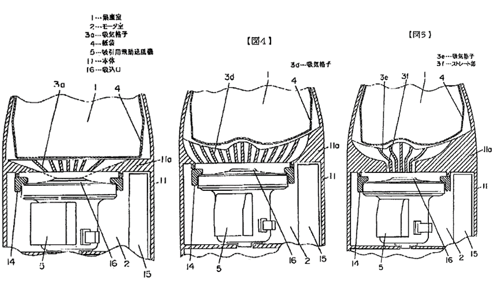Overview
With the decision BGH X ZR 19/21 – „Staubsauger“, of 31/01/2023, the Federal Court of Justice (FCJ) is moving closer to the EPO by implicitly applying the "could-would approach". Accordingly, the mere ability or expertise of the person skilled in the art to make a certain modification to an item of prior art is not sufficient to establish obviousness of the subject-matter of the invention. Rather, there must always be a prospect of success or an incentive to make such a modification.
The German part of the European patent EP 1 434 512 B9 underlying this decision of the FCJ is also the subject of the case C-339/22 regarding foreign jurisdiction that will be heard before the Grand Chamber of European Court of Justice (ECJ) on 14 May 2024.
Reasons for the decision
The subject matter was the German part of the European patent EP 1 434 512 B9 (EP'512), which relates to a vacuum cleaner. The objective of the invention is to improve the suction power of "ultra-compact" floor vacuum cleaners, which often have an "angled" guidance of the suction air flow, and at the same time to avoid the risk of injury from rotating rotor blades of the compressor. The vacuum cleaner according to independent claim 1, which survived an opposition and subsequent appeal procedure at the EPO, serves as a solution to this problem. The vacuum cleaner comprises, among other things, a partition wall (TW), an air guide funnel (LT) and an engagement protection element (ES). The decisive factor here is that these three elements form a single component (feature o)).

<Fig. 1 of EP‘512; ES, LT and TW are designed as a one-piece component, green markings added by the authors>
In the opposition proceedings before the EPO, the Japanese publication JP H11-137484 (D25) was already regarded as the closest prior art. D25 also relates to a vacuum cleaner with a partition wall (cf. element 11a), an air guide funnel (cf. the shape of element 11a extending towards the compressor 5, 16) and ribs or a grating which can prevent engagement (cf. elements 3a, 3d, 3e). According to D25, the specific design, i.e. the shape and arrangement of the ribs or grating in particular, is selected so that the air flow is particularly smooth (i.e. laminar) towards the compressor.

<Fig. 1, Fig. 4 and Fig. 5 of D25>
However, D25 does not reveal whether the three elements, partition wall, air guide funnel and ribs/grating are made of the same material and how many parts they consist of. Firstly, the hatching in the figures is not clear, so it is not clear whether the three elements in question are made in one piece. Moreover, the description is completely silent on this issue. Furthermore, the disclosure content of figures alone, without corresponding explanations in the description, is generally very limited according to established case law.
The EPO (Opposition Division and Board of Appeal) had been of the opinion that the skilled person could not easily provide the three elements of D25 as a single one-piece component, e.g. by injection moulding. Rather, changes must be made to the shape and orientation of the ribs before said elements can be moulded as a single component in an injection moulding process, which the skilled person had no reason to do.
The German Federal Patent Court (FPC), on the other hand, considered the subject-matter of independent claim 1 to be obvious to the skilled person starting from D25. In the view of the FPC, it is within the scope of the skilled person to choose between a one-piece and a multi-piece design. In the course of routine considerations, the skilled person assumed by the FPC can change the shape and orientation of the ribs of the engagement protection element in such a way that production by injection moulding is easily possible in one go. The FPC therefore revoked the patent.
Unlike the FPC, the FCJ did not consider feature o), according to which the three elements are formed in one piece, to be obvious to a skilled person starting from D25. As correctly assumed by both the EPO and the FPC, a one-piece production of the elements according to D25 is at best possible with considerable effort, the one-piece design according to the contested patent based on D25 is not obvious for the skilled person. The ability of the skilled person to make the necessary changes to the elements of the D25 is not sufficient to qualify such an embodiment as obvious. This is because an additional incentive is required to make use of this ability (cf. the EPO's "could-would approach"). There is no such incentive in D25. On the contrary, since D25 concerns the specific design of the ribs for "smoothing" the air flow, D25 even teaches away from changing the shape and orientation of the ribs. The decision of the FPC was therefore overturned by the FCJ.
Summary
A one-piece configuration is not obvious simply because the skilled person has the necessary ability or expertise to make the necessary changes to the configuration of the prior art elements. In addition, an incentive or a concrete prospect of success in the prior art is always required in order to affirm the obviousness of a one-piece configuration.
With this judgement and the implicit application of the "could-would approach", the FCJ is moving the assessment standard for inventive step closer to the practice of the EPO. It remains to be seen whether and when the FPC will also move away from its common practice of postulating "more capable" skilled persons than the EPO.
Practical tip
When assessing and arguing with regard to inventive step and the obviousness of solutions based on the knowledge of the skilled person, a corresponding incentive from the prior art must always be taken into account.
If the FPC assumes a "slightly too capable" skilled person who makes changes without sufficient incentive to the detriment of the applicant or proprietor, it may be worth going to the FCJ for clarification.




